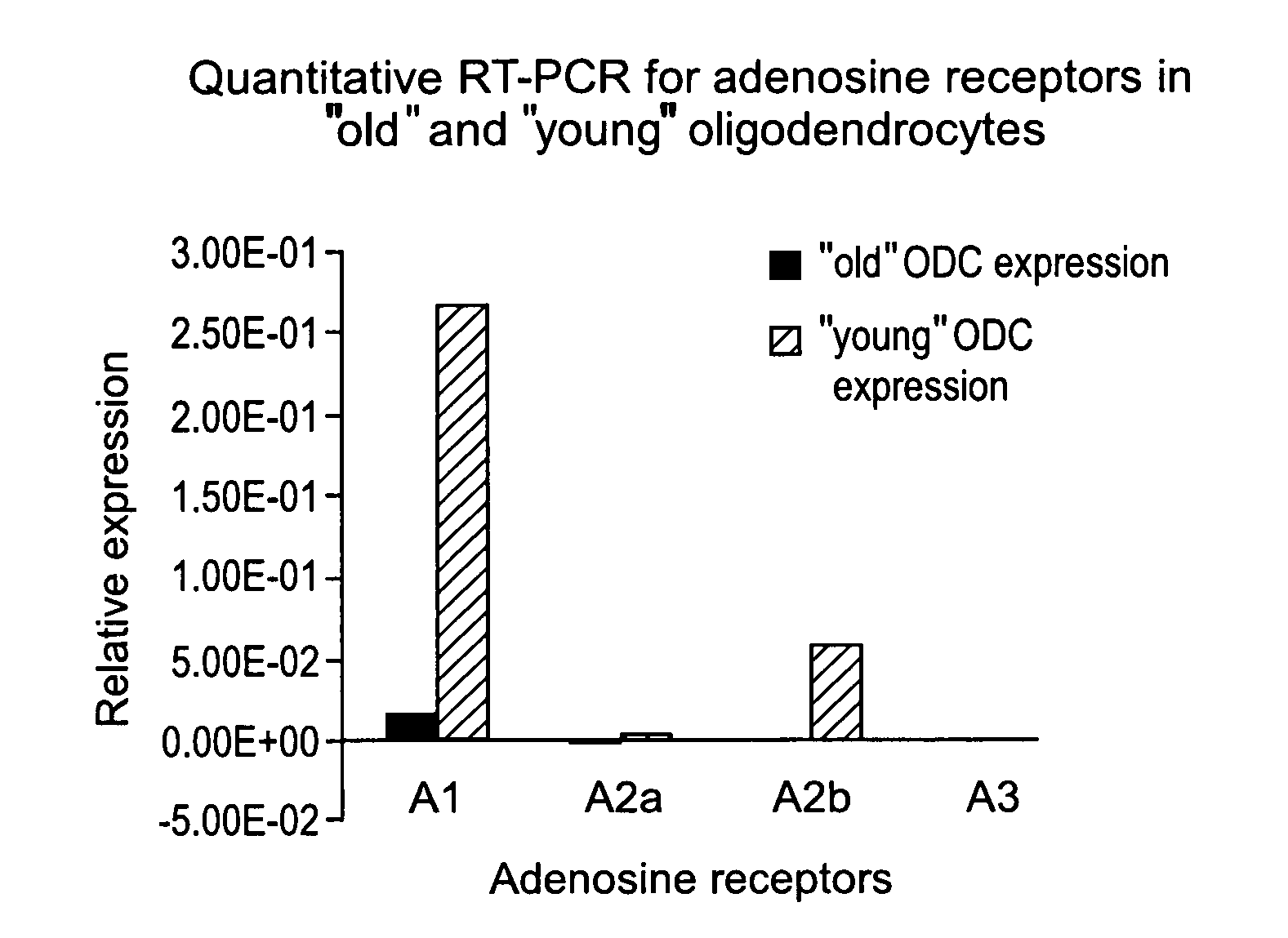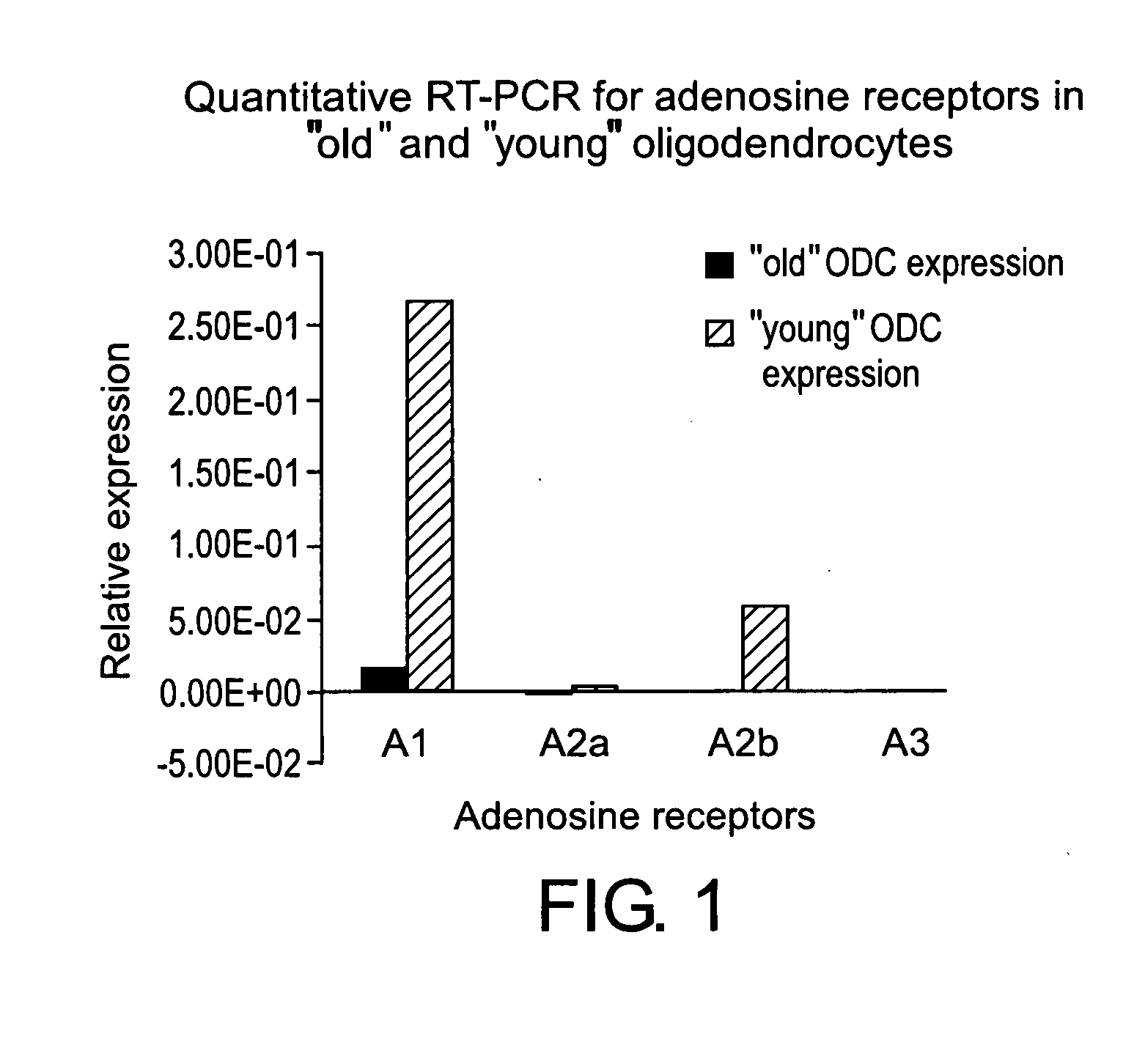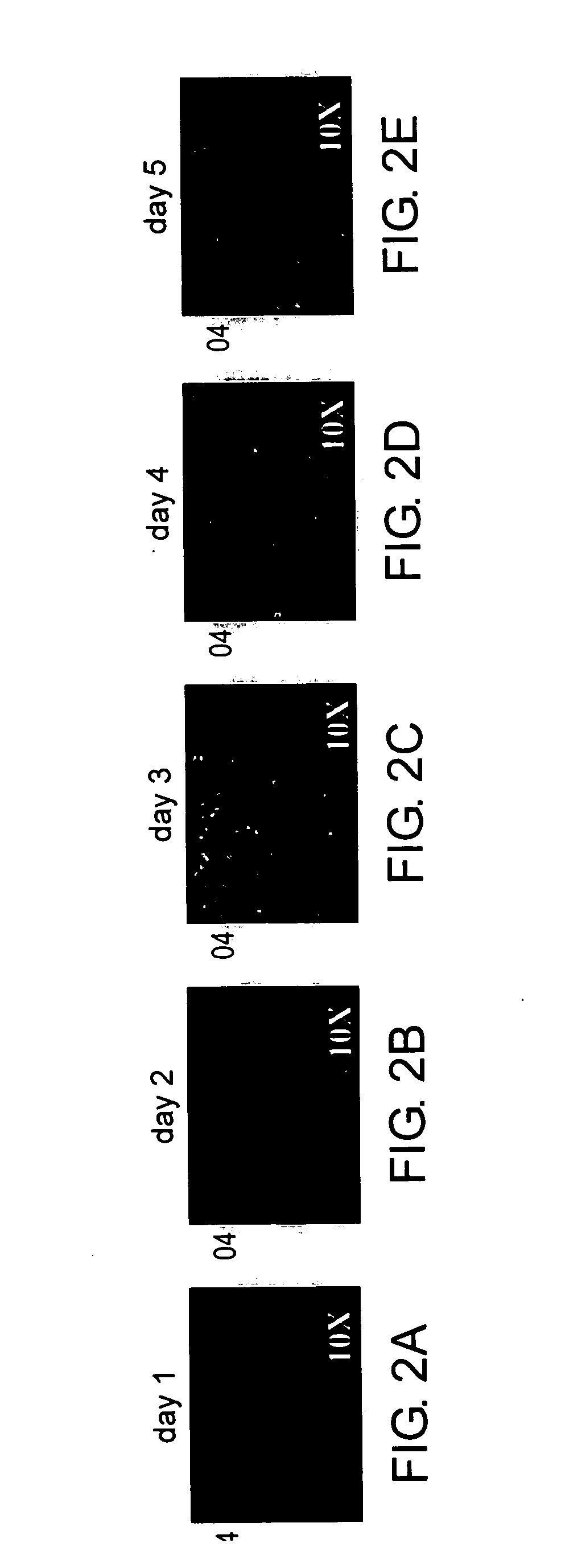Methods of identifying genes which modulate myelination
- Summary
- Abstract
- Description
- Claims
- Application Information
AI Technical Summary
Benefits of technology
Problems solved by technology
Method used
Image
Examples
example 1
Development of Cell Culture Systems to Study Myelination
[0162] In order to address the myelinating and demyelinating aspects of the secondary progressive stage of MS, a cellular system was established to represent such MS lesions. A co-culture system of purified rat retinal ganglion cells (RGC) and optic nerve oligodendrocytes was used. This system recapitulates some significant aspects of MS lesions, namely, the oligodendrocytes loosely wrap membrane around axons, but fail to form internodes of compact myelin. The RGC neurons in these cell cultures are, for the most part, electrically inactive and may resemble dystrophic neurons observed in MS lesions. Furthermore, cell isolation, purification, and culture methods, conditions and compositions were developed, as described herein.
[0163] Purification of optic nerve oligodendrocytes was conducted as follows. Optic nerve oligodendrocytes are purified from postnatal day 5 (p5) Sprague-Dawley (“SD”) rat pups according to the methods des...
example 2
Use of siRNA as a Control for Oligodendrocyte Cell Culture Screening and Modulation of Myelination
[0184] It was also demonstrated herein that oligodendrocytes are competent for RNAi techniques. The criterion for choosing an endogenous target for RNAi requires that the target is relatively non-essential for oligodendrocyte survival and functioning. To accomplish this, the endogenously expressed cell adhesion molecule NCAM was selected for preliminary validation. Four RNAi oligonucleotides for NCAM were prepared (Qiagen). Oligodendrocytes were grown in mitogenic media for 3 days and differentiated for two days before transfecting with siNCAM (“siNCAMs 1-4,” which represent a set of four different siRNAs that were evaluated for use in RNAi experimentation as described herein).
[0185] The protocol for siRNA transfection into oligodendrocytes is as follows. All transfections were conducted using 24-well plates, The first solution included 50 μL OptiMEM medium, 0.8 μg plasmid DNA and / or ...
example 3
[0188] Optic nerve or cortical oligodendrocytes were purified from postnatal day 2-day 5 old rat pups by immuno-panning with the A2B5 antibody (ATCC). Retinal ganglion cells were purified from 5 day old rats by immunopanning with the Thy1 antibody T11D7.
[0189] Purified oligodendrocytes were plated on PDL / merosin substrate-coated tissue culture dishes in defined DMEM Sato medium, promoting proliferation for two days. After 2 days, the medium was switched to defined DMEM Sato medium, containing factors promoting differentiation. Twenty-four hours after the switch to differentiation medium, ADORA1 agonists were added. Retinal ganglion cells were plated 24 hours thereafter, and medium consisted of astrocyte-conditioned medium with DMEM Sato medium mixed with defined Neurobasal™ Sato medium, containing growth factors promoting retinal ganglion cell survival and 0.5% FBS.
[0190] Cultures were grown for two weeks, with medium changes occurring every three days. ...
PUM
| Property | Measurement | Unit |
|---|---|---|
| Fraction | aaaaa | aaaaa |
Abstract
Description
Claims
Application Information
 Login to View More
Login to View More - R&D
- Intellectual Property
- Life Sciences
- Materials
- Tech Scout
- Unparalleled Data Quality
- Higher Quality Content
- 60% Fewer Hallucinations
Browse by: Latest US Patents, China's latest patents, Technical Efficacy Thesaurus, Application Domain, Technology Topic, Popular Technical Reports.
© 2025 PatSnap. All rights reserved.Legal|Privacy policy|Modern Slavery Act Transparency Statement|Sitemap|About US| Contact US: help@patsnap.com



